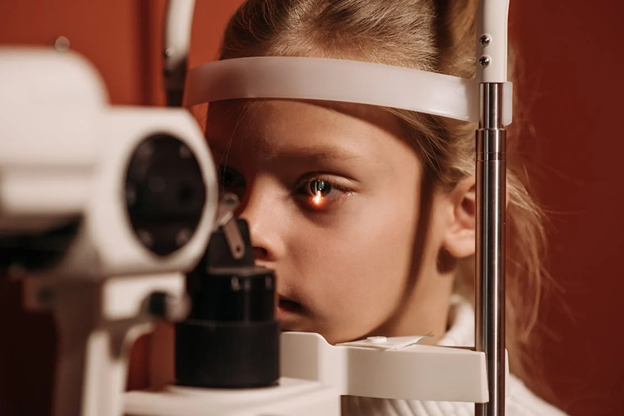
Children's Eye Health: What Parents Need to Know
As parents, we strive to give our children the best start in life. This includes ensuring their health and well-being, one of the most important aspects being their eye health. Vision problems are more common than many realize, and early detection can make a significant difference in treating and managing eye conditions. Understanding the key factors influencing children’s eye health can help parents make informed and proactive decisions to protect their child's vision.
The Importance of Early Eye Exams
Did you know that many eye conditions can go unnoticed in children until they are much older? That’s why early eye exams are critical. According to the American Optometric Association, children should have their first comprehensive eye exam at six months, followed by additional exams at age three and before starting school. These eye exams can identify issues such as nearsightedness, farsightedness, astigmatism, and other vision problems that may not be obvious to parents.
Detecting vision problems in children early on can prevent long-term issues. For example, conditions like amblyopia (lazy eye) are most treatable when caught early, before the age of 8 or 9. Regular eye exams also help monitor eye development, ensuring that your child’s vision remains healthy as they grow.
Common Eye Problems in Children
These are a few common eye conditions that parents should be aware of:
1. Refractive Errors
Refractive errors, such as nearsightedness, farsightedness, and astigmatism, are some of the most common vision problems in children. These issues occur when the shape of the eye prevents light from focusing directly on the retina, leading to blurry vision. Thankfully, these conditions can usually be corrected with glasses or contact lenses.
2. Strabismus (Crossed Eyes)
Strabismus occurs when the eyes do not align properly. One eye may turn inward, outward, or upward, while the other remains focused. This condition can affect depth perception and may lead to amblyopia if left untreated. Treatment often involves eye exercises, corrective lenses, or surgery in more severe cases.
3. Amblyopia (Lazy Eye)
Amblyopia is a condition where one eye does not develop normal vision, often due to strabismus or a significant difference in refractive errors between the two eyes. If untreated, amblyopia can lead to permanent vision loss in the affected eye. Early intervention with patching or other treatments can help improve vision.
4. Conjunctivitis (Pink Eye)
Conjunctivitis, commonly known as pink eye, is an infection or irritation of the eye's outer membrane. It can cause redness, itching, and discharge. While it is usually a mild condition, it’s highly contagious and can spread easily in schools and daycare centers. Practicing good hygiene and keeping your child home when they are sick can help prevent the spread of pink eye.
Protecting Children's Eyes from Digital Strain
In today’s digital age, children spend more time than ever in front of screens, whether for schoolwork, games, or entertainment. Extended screen time can contribute to digital eye strain, which causes discomfort, dryness, and blurry vision. This can be particularly concerning for children, as prolonged strain may affect their developing eyes.
To help protect your child’s eyes, consider these tips:
● Encourage the 20-20-20 rule: Every 20 minutes of screen time, encourage your child to look at something 20 feet away for 20 seconds.
● Limit screen time: Aim for no more than two hours of screen time per day for children, depending on their age and needs.
● Ensure proper lighting: Make sure your child’s screen is well-lit, avoiding glare or overly dim lighting that can strain the eyes.
Nutrition for Healthy Eyes
A healthy diet plays an important role in supporting your child’s vision. Certain nutrients help protect the eyes from damage and promote optimal eye development. Some of the best foods for supporting children’s eye health include:
1. Carrots and Sweet Potatoes
These foods are rich in beta-carotene, which the body converts into vitamin A. Vitamin A is essential for good vision and helps prevent night blindness.
2. Leafy Greens
Spinach, kale, and other leafy greens contain lutein and zeaxanthin, antioxidants that protect the retina from harmful light and promote overall eye health.
3. Eggs
Eggs are a great source of both vitamin A and lutein. They also contain zinc, which helps maintain healthy eyes and may lower the risk of macular degeneration later in life.
4. Fish
Fatty fish like salmon and mackerel are rich in omega-3 fatty acids, which help prevent dry eyes and support overall eye health.
Encouraging your child to eat a balanced diet rich in these nutrients can promote good vision and reduce the risk of eye problems later in life.
Good Habits for Healthy Vision
Along with regular eye exams and a nutritious diet, there are a few other habits that can help support your child’s eye health:
● Encourage outdoor activities: Spending time outdoors has been shown to reduce the risk of nearsightedness (myopia) in children.
● Teach proper hygiene: Teach your child to avoid rubbing their eyes and to wash their hands frequently to prevent eye infections.
● Use protective eyewear: Whether playing sports or engaging in outdoor activities, ensure that your child wears appropriate protective eyewear to avoid eye injuries.
Final Thoughts
Caring for your child’s eye health is one of the most important things you can do as a parent. Early detection of vision problems in children, a balanced diet, and healthy habits all play a crucial role in ensuring your child’s vision stays clear and strong for years to come.
By taking proactive steps, you can help prevent eye issues and promote healthy vision as your child grows. Don’t wait for signs of problems; regular eye exams and healthy lifestyle choices can go a long way in maintaining good eye health.
Visit our website for more tips on how to care for your child’s eyes. We’re here to support you and your family’s vision and health every step of the way!
